Anthropology
Related: About this forumMexico archaeology: Pre-Hispanic ruins found on mountaintop
6 hours ago
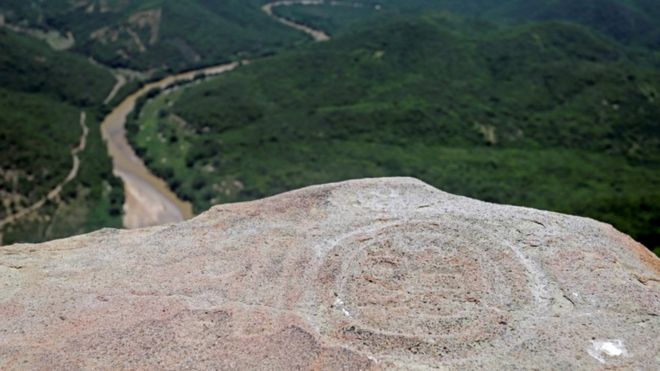
EPA
Those living at the mountaintop site had a commanding view
Two pre-Hispanic carved stone monuments believed to date back more than 1,500 years have been uncovered on a mountaintop in central Mexico.
Archaeologists say the site - which in its heyday would have had seven pyramids, a ceremonial area and a games court - was found by villagers.
It is thought to have been built by the Zapotecs, who lived in the southern highlands of what is now Mexico.
The carvings suggest it may have been dedicated to the god of the underworld.
The site is at a strategic point on top of the Cerro de Peña mountain in Puebla state at a height of 1,845m (6,000ft).
More:
https://www.bbc.com/news/world-latin-america-53498110
~ ~ ~
Google translated:
Pre-Hispanic pieces of the classical period discovered in Axutla, Puebla (PHOTOS)
Posted on July 10, 2020 by MTP News
'Cerro de la Peña', located in the municipality of Axutla , almost three hours from the city of Puebla, has an archaeological site on its mountain that requires two hours of walking to enjoy.
It is about 87 glyphs, two structures and pre-Hispanic pieces that date from the classical period, that is, from the year 500 after Christ, and that until a few days ago, was only known to the inhabitants of this area of the Mixteca of Puebla.
José Alfredo Arellanes, chronicler of Puebla, realizes that this mountain - Cerro de la Peña - was located a ceremonial center made up of seven pyramids and a ball game, where a mixture of Teotihuacan and Zapotec cultures settled .

Now, the idea of the authorities is to detonate the area as a tourist spot at the end of the coronavirus pandemic .
The concern of the municipal president, Marco Antonio Monge, is to avoid looting of the historical pieces in which the intervention of the National Institute of Anthropology and History (INAH) is expected.
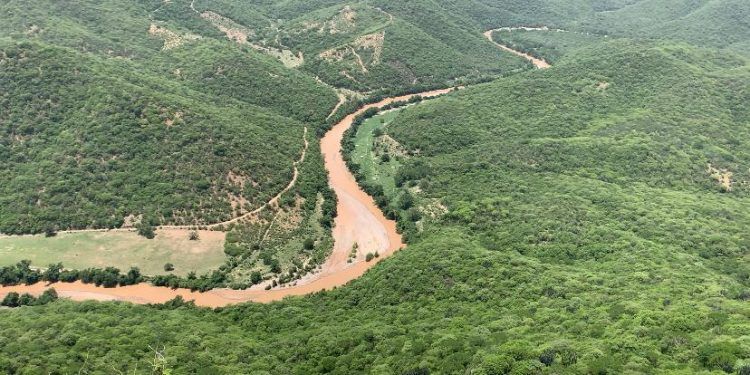
Two hours of walking to reach the 'Cerro de la Peña'
The hill where these vestiges were located is located 1,845 meters above sea level, in the community of Huehuepiaxtla , and these are the pieces that await:
The Stone of the Eagle: it has a bird with a speech virgula and under the bird, a glyph with the year sign with numeral 9, on the right side a kind of lizard engraved in the corner of the stone.
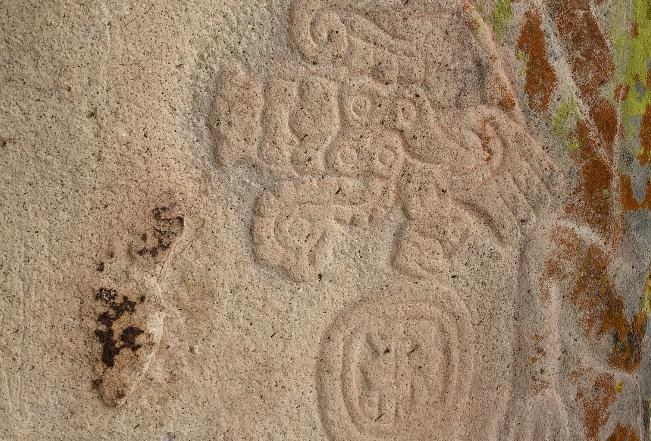
Basaltic rock stele: it has a bas-relief carving with anthropozoomorphic motifs, representing a character standing, facing, zoomorphic head, with feline claws, its legs are open, semi-flexed and its tail is suspended.
Similarly there are remains of fractured sculptures with scrolls, frets, forked tongues and chalchihuites.
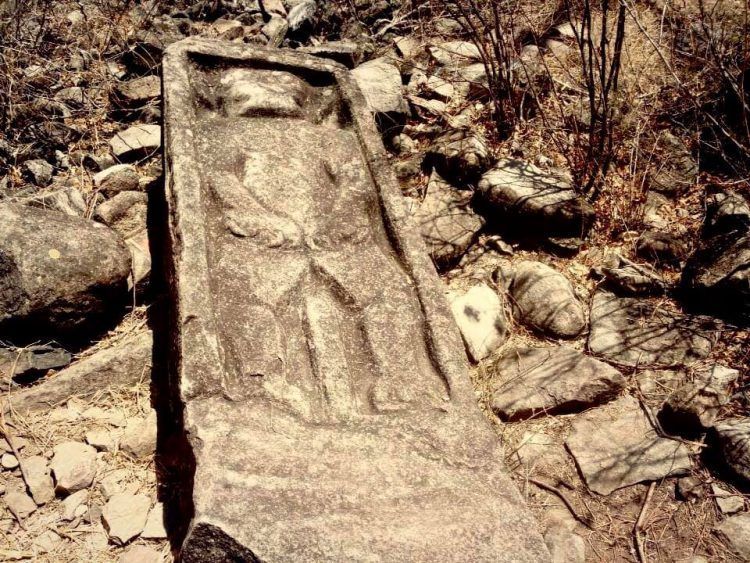
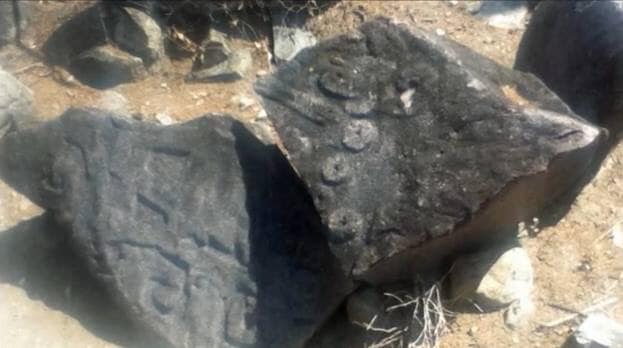
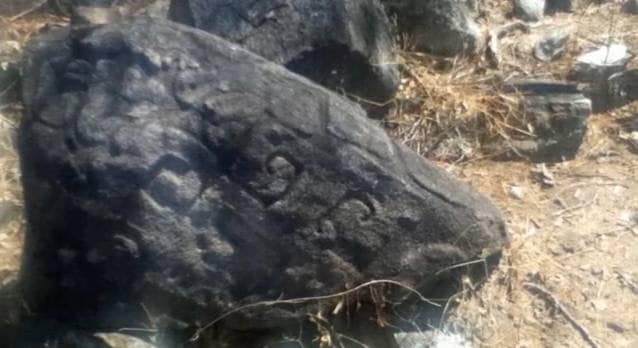
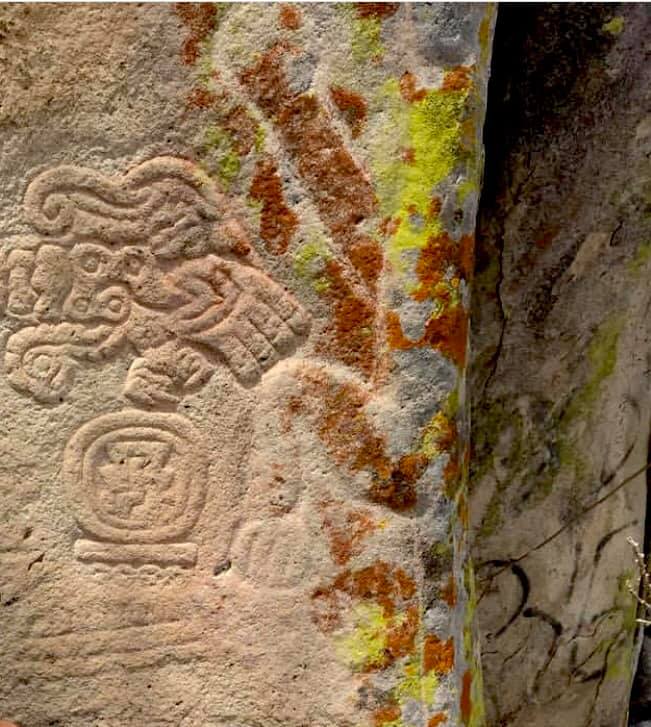
https://mtpnoticias.com/destacadas/descubren-piezas-prehispanicas-del-periodo-clasico-en-axutla-puebla-fotos/
Judi Lynn
(164,038 posts)Access to the so-called Archaeological Center is difficult because it is 1,845 meters above sea level
By: EFE
July 21, 2020 - 11:20 a.m.
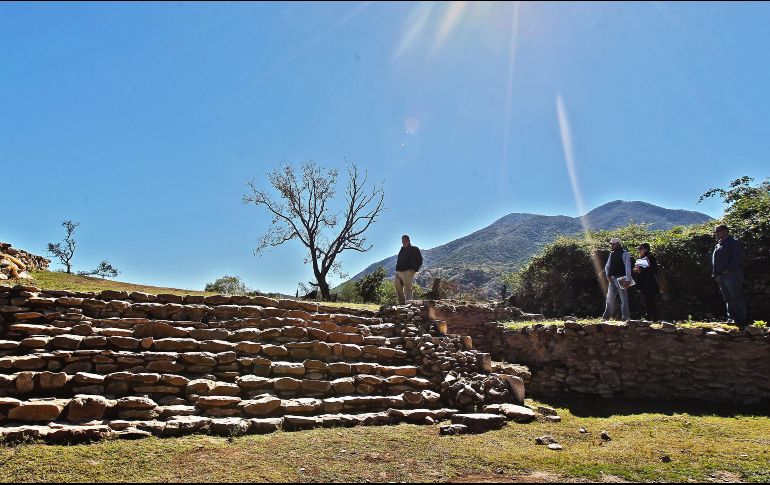
Two towers that reveal that the god of the Underworld was venerated at the top of the mountain are some of the remains and found by inhabitants of Santa Cruz Huehuepiaxtla, in the central Mexican state of Puebla, hidden for centuries in Cerro de la Peña .
These archaeological remains dated to 500 AD, among which these two towers and stones stand out with the engraved image of a person with horns, claws and loincloth , are the most complete pieces found in the place and recently released by researchers and inhabitants of the tiny town.
José Alfredo Arellanes, a researcher at the National Institute of Anthropology and History (INAH), revealed on Tuesday that the first studies show that the site is made up of seven pyramids and a ball game, essential for pre-Hispanic leaders .
"When we reach the top we can see the ceremonial area, that is, where the temples and palaces of rulers were located," said the archaeologist.
Access to the so-called Archaeological Center is difficult because it is 1,845 meters above sea level , so it is necessary to climb or walk almost two and a half hours along a rocky path in which there are also remains of ancient vessels.
For now, they have found images carved on walls and floors that reflect the way of life of the Teotihuacan and Zapotec cultures , possible inhabitants of the place.
Although the damage of the weather and the climate have vanished some remains, signs remain, such as 87 glyphs, as the signs engraved or painted on the infrastructure are called.
"You can see what are inscriptions on the north, northeast and top slopes, those inscriptions are from the ñiuñe script Ñiuñe in Mixteco translates as hot or hot land and it is a unique style," said Arellanes.
Archaeological challenge
The Mixtecos, so called because they live in Mixtecapan (country of the Mixtecos) or Mixtlán (place of clouds) occupy a region of about 40 thousand square kilometers that encompasses the states of Guerrero and Puebla.
For this reason, reaching the tip of Cerro de la Peña implies accessing the best view of the Mixteca of Puebla , with its chain of mountains that touch the clouds and the river.
But the terrain conditions are also a challenge to study the remains .
Gabriel García, guide of the Archaeological Center, indicated that there are many vestiges that they are barely discovering because only one archaeologist has come up who gradually explains the pieces and the possible existence of others.
INAH Jalisco responds to federal cut
"There is a stone carved with an image of an iguana, and just like an eagle, and on the other side of the rock there is a Bat God or God of the Night, just as she has the shape of a woman," said the expert.
Archaeological wealth
Due to its location and history, Puebla is one of the richest states in pre-Hispanic heritage , with eight archaeological zones recognized by the Cultural Information System of the Government of Mexico .
In the entity, with more than six million inhabitants, there are almost a million indigenous people, with Nahuatl, Totonac and Mazatec as the most numerous towns.
For this reason, the councilor of Axutla, Aracely García, -municipality to which Santa Cruz Huehuepiaxtla belongs- shared that it is a pride to have in its territory so much history to provide the country with more information about its ancestors.
For this reason, he stressed the importance of the support of the authorities for the investigations, including those that are being carried out in Cerro de la Peña.
"Vestiges or images carved in stone is what makes the place special and therefore (we must) invite people to get to know our Archaeological Center, better known as Cerro de la Peña," he concluded.
https://www.informador.mx/cultura/Descubren-vestigios-prehispanicos-en-un-recondito-cerro-de-Puebla-20200721-0050.html
Judi Lynn
(164,038 posts)La Gran Peña, origin of myths and legends in the Mixteca of Puebla and Oaxaca
It is a small community located in the wild region of the Mixteca, although nothing is known for sure about its origin.
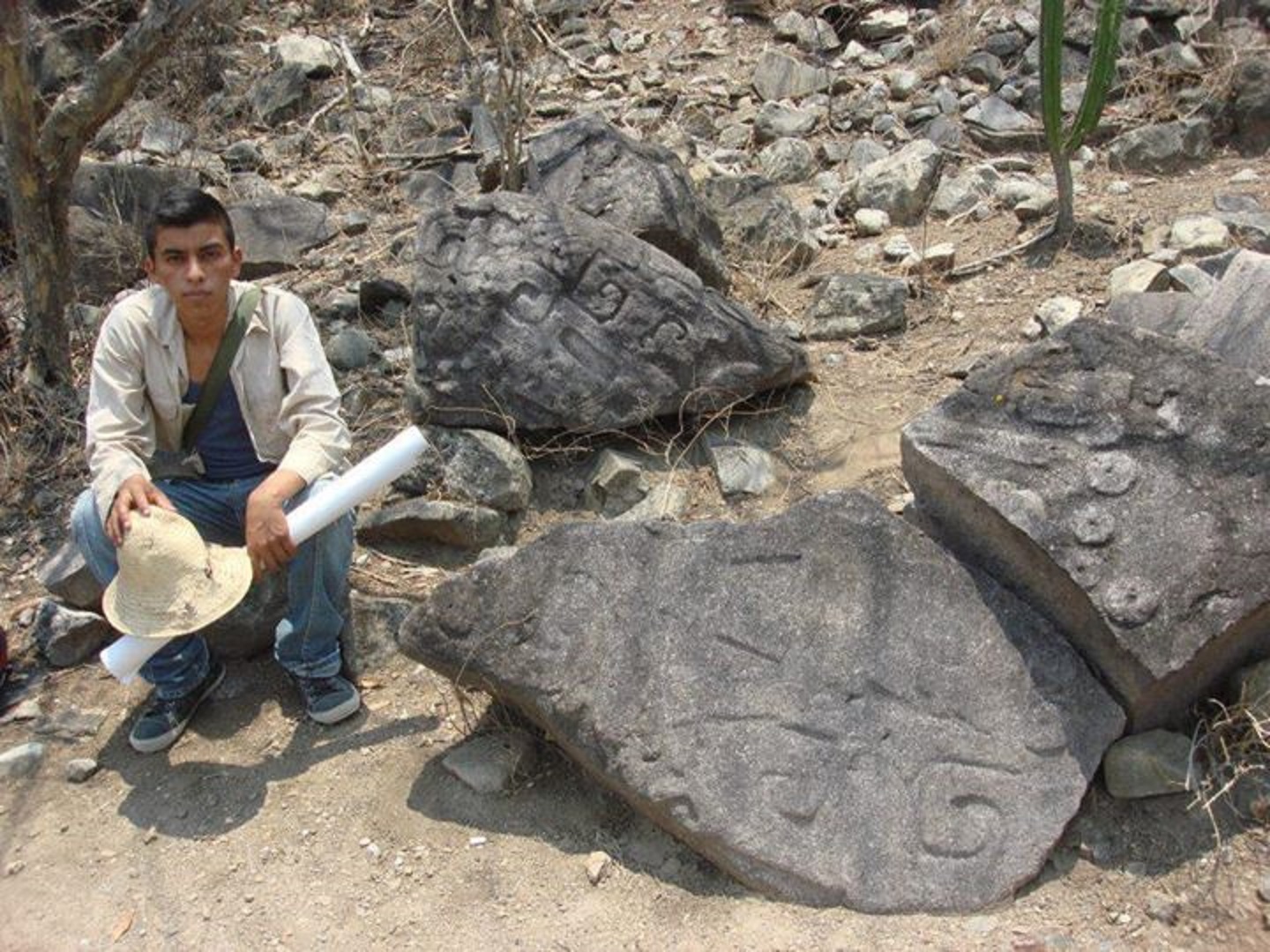
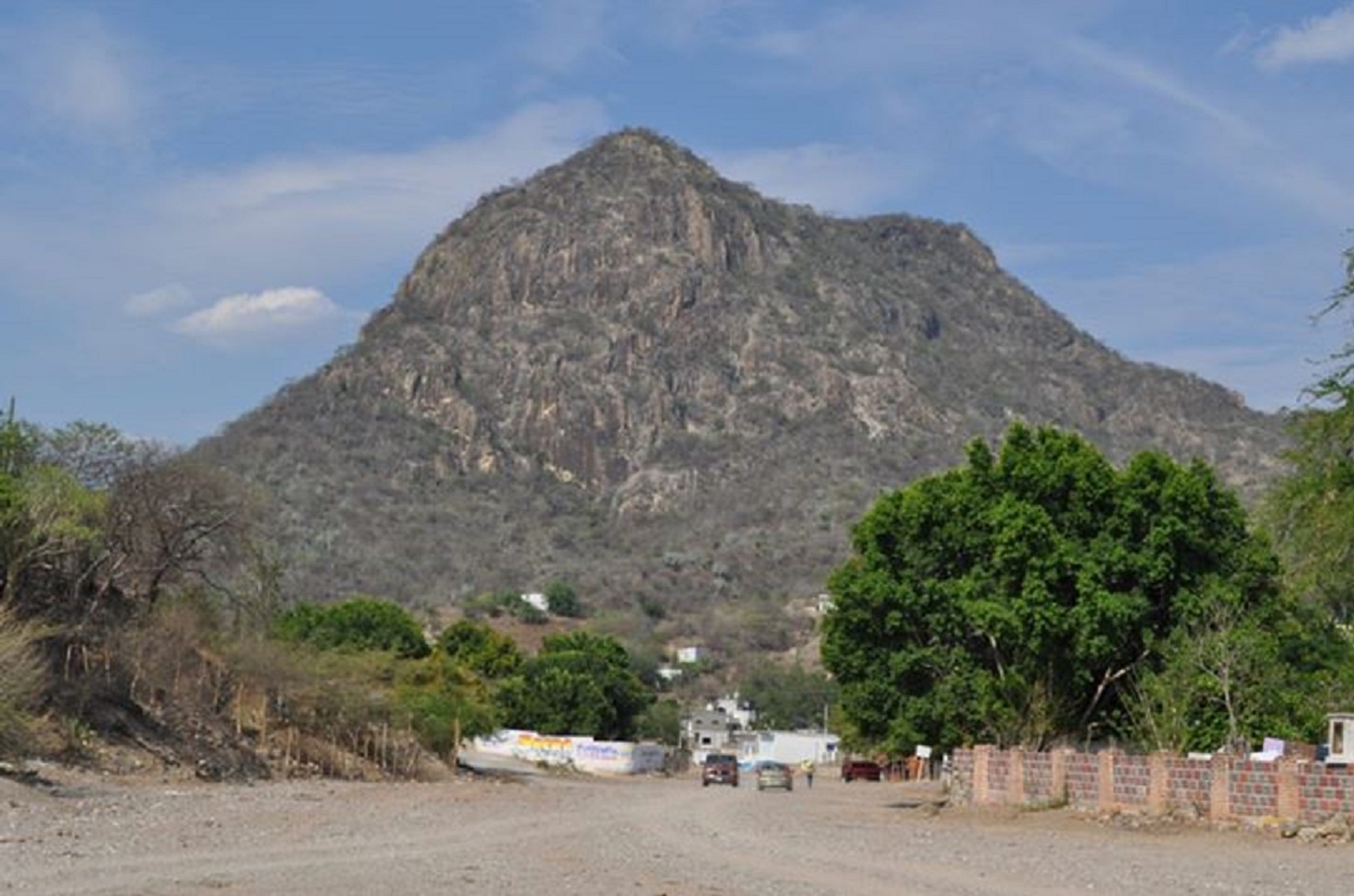
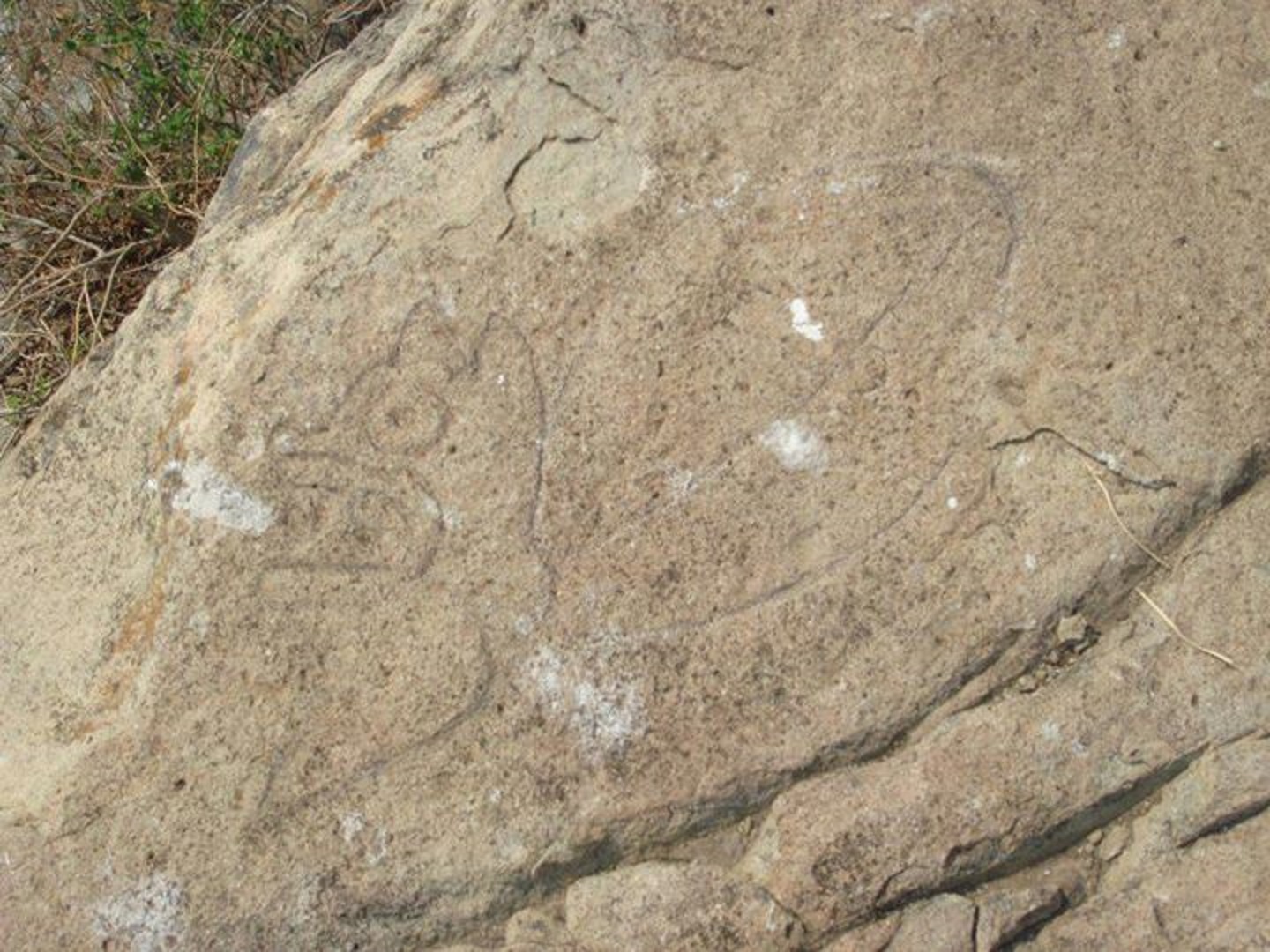

Sunday, December 22, 2013 2:32 PM
Axutla, Pue.- In abandonment, exposed to looting and without the support of federal authorities for their protection, the archaeological zone of Huehuepiaxtla, on the border of the state of Puebla and Oaxaca, keeps a mystery that draws the attention of both locals and strangers, for the myths that have been created around the “Gigantesca Peña”.
Huehuepiaxtla is a community belonging to the municipality of Axutla in the Mixteca of Puebla, according to research and data collected from many years ago by the Chronicler Alejandro Pantaleón Calixto, strange beings may have lived in the heights of this rock.
According to the chronicler, it is a small community located in the wild region of the Mixteca, although nothing is known for sure about its origin, the only thing registered is that in 1606, these settlers belonged to the Piaxtla parishioners, since this is how He could appreciate in his respective books of baptisms, marriages, deaths, among other ecclesiastical records.
The Great Rock
Beyond what is known through written records, there is an oral tradition that brings us ancient information, which has been passed down from generation to generation, and which is rescued today in a legend, which explains the cause of the existence of great characters sculpted in stone, such as an "anthropomorphic figure, with the head of a bull, arms and instead of hands he has feline claws, legs and a feline's tail".
Pantaleón Calixto narrates that in Huehuepiaxtla, located next to the “Atoyaque” river, there is a huge hill, known as La Gran Peña, that stands out from all the local orography, difficult to access due to its height, but that at the top there is an obelisk and stone figures of different shapes and sizes.
Among the most striking and best preserved is the anthropomorphic figure with a bull's head, sculpted in stone using the bas-relief technique.
Likewise, he said that the testimony of a local is that the first inhabitants of the region lived in that rock, which they assure was very faithful to God, but there were also beings that always harmed, bit, and hit the inhabitants. They claim that strange beings had the ability to transform into animals, trees, or things; therefore, humans could not defend themselves or avoid being attacked.
The narrative concludes that God saw everything that was happening, so he decided to help humans, sending rays from heaven, which touched these rare beings, turning them into stone, and they were petrified in the last form they had adopted. According to the ancestors, this is the reason why there are so many strange figures on top of La Gran Peña in the Huehuepiaxtla community.
For years, this area has been the subject of legends about the existence of a cave in which there are more figures among Morras, among which the one of a golden calf stands out, which to date have not been verified. However, locals report that they have found vestiges such as arrowheads, obsidian beads, kitchen utensils, as well as stone walls more than a meter high, hidden underground.
https://municipiospuebla.mx/nota/2013-12-22/acatl%C3%A1n-de-osorio/la-gran-pe%C3%B1a-origen-de-mitos-y-leyendas-en-la-mixteca-poblana-y